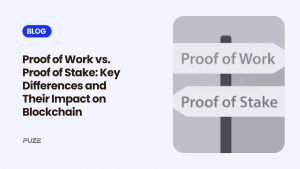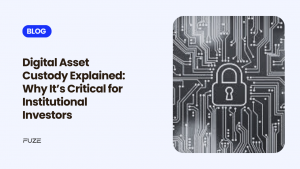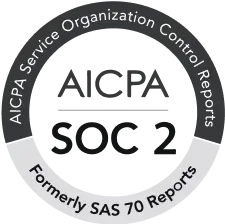As crypto and DeFi gain mainstream traction, more individuals are exploring opportunities to generate passive income from their digital assets. Among these strategies, crypto staking stands out as a leading option which is not only accessible and profitable but also essential for the operation of blockchain networks.
As we move through 2025, crypto staking has developed significantly, providing fresh opportunities for earning rewards while bolstering network security and decentralisation. Let’s take a closer look at what crypto staking is, how it operates, and why it has become a fundamental approach to passive income this year.
What is Crypto Staking?
At its core, crypto staking is locking up digital assets in a blockchain network to participate in its operations, such as validating transactions and creating new blocks. Participants who stake their assets help maintain the security and decentralisation of the network while earning rewards in return, usually paid in the blockchain’s native cryptocurrency.
Staking is typically associated with the blockchains using Proof of Stake (PoS) or its variations, including Delegated Proof of Stake (DPoS) and Liquid Proof of Stake (LPoS). Unlike the highly energy-intensive model of Proof of Work (PoW), which consumes a lot of energy by trying to solve complex computational problems, PoS selects validators on the basis of the number of tokens they are willing to stake. This results in greater energy efficiency and scalability, making PoS networks an environmentally friendly alternative.
How Does Staking Work?
Staking typically involves the following steps:
- Choose a Blockchain Network: Staking is performed on PoS-based blockchains like Ethereum, Polkadot, or Solana. Each network has unique staking requirements, lock-up periods, and reward structures.
- Lock Your Assets: Users lock their cryptocurrency in a wallet or on a staking platform, committing their assets to the network.
- Become a Validator or Delegator:
- Validators are responsible for directly verifying transactions and creating new blocks. This requires significant technical expertise and a substantial amount of staked assets.
- Delegators stake their assets with a validator, earning rewards without managing the technical complexities.
- Earn Rewards: Rewards are distributed based on the amount of cryptocurrency staked and the staking duration.
Why Is Crypto Staking Popular in 2025?
The rising appeal of staking as a method of passive income can be attributed to several factors:
- Growing Adoption of PoS Networks: The shift toward PoS for its scalability and energy efficiency has expanded staking opportunities across numerous blockchain ecosystems.
- High Returns Compared to Traditional Investments: Staking rewards often outperform the annual percentage yields (APYs) of traditional savings accounts or fixed deposits.
- User-Friendly Platforms: Advancements in staking platforms have made the process easier and friendly for beginners.
- Sustainability: PoS networks are a lot more energy-efficient than the PoW system, which complements the move toward greener technologies globally.
Key Benefits of Crypto Staking
- Consistent Passive Income
Earning passive income through staking is reliable. Rewards are accrued at regular time intervals, daily, weekly, or monthly. This means there is a continuous flow of income that can either supplement or complement your income.
- Accessibility
Staking does not require advanced technical skills. Many platforms feature intuitive interfaces, allowing users to stake with just a crypto wallet and a modest initial investment.
- Eco-Friendly Income
Staking is an energy-friendly method of earning crypto rewards as compared to mining. Environmentally conscious investors are attracted to this kind of investment.
- Compounding Rewards
Some platforms offer the possibility of reinvesting the rewards earned. Over time, compound growth will lead to exponential returns.
- Diverse Opportunities
The crypto ecosystem presents a range of staking options to cater to various risk appetites and investment objectives. These include flexible staking, liquid staking, and staking tied to governance privileges.
- Diversification of Portfolio
Staking offers a steady, low-risk income stream that can complement higher-risk investments in a well-balanced portfolio.
- Reduced Volatility Impact
Locking assets for staking discourages impulsive trading during market fluctuations, promoting long-term investment strategies and stable portfolio growth.
- Governance Participation
Stakers often acquire voting rights, which enables them to have a say in crucial decisions within the blockchain, including protocol upgrades and governance changes.
How to Start Staking in 2025
- Select a Blockchain Network: Research the network’s APY, reputation, and long-term growth potential. Popular options include Ethereum, Cardano, and Polkadot.
- Select a Staking Platform: Decide between staking natively through the blockchain or using third-party platforms like exchanges or staking-as-a-service providers.
- Understand the Requirements: Review minimum staking amounts, lock-up periods, and fees. Some platforms offer flexible staking options, while others may require fixed terms.
- Stake Your Tokens: Move your crypto to a staking wallet or platform and follow the process to get staking started.
- Monitor and Reinvest: Stalk rewards and performance frequently. Having your earnings reinvested is the best way to maximise long-term returns.
Risks to Consider
While staking can be rewarding, it’s not without risks.
- Market Volatility: The value of staked assets can fluctuate with market conditions, which might affect profitability even with rewards.
- Lock-Up Periods: In most networks, assets are locked, which restricts liquidity during the staking period.
- Slashing Risks: Validators acting maliciously or not following the rules of the protocol may be penalized, and this reduces the rewards for the delegators.
- Platform Risks: Using third-party staking services exposes the user to risks such as hacks, mismanagement, or insolvency.
The Future of Staking
The future of staking looks bright, driven by innovations like liquid staking and cross-chain staking. These advancements will offer more flexibility and efficiency, appealing to retail and institutional investors alike. As PoS networks continue to grow, staking is expected to become an even more integral part of the crypto economy in 2025.
Conclusion
Crypto staking has become one of the most attractive ways to earn passive income in 2025. With higher returns, sustainability, and increasing accessibility, staking provides an excellent opportunity for investors of all levels. By staying informed, choosing reliable platforms, and understanding the associated risks, you can unlock the full potential of staking to secure a steady income stream while contributing to the blockchain ecosystem.
Disclaimer: Virtual assets carry significant risks, including high volatility and potential loss of your entire investment. They are not backed by governmental protections, and recourse may be limited in case of loss. Always assess your risk tolerance, fully understand the risks, and seek independent financial advice if needed before investing.
Frequently Asked Questions
- Is staking crypto risky? Yes, staking involves risks, including market volatility, lock-up periods that limit liquidity, validator slashing penalties, and counterparty risks when using third-party platforms. Understanding these risks and conducting thorough research can mitigate potential downsides.
- What are the lock-up periods for staking? Lock-up periods vary by network and can range from a few days to several months. During this time, staked assets cannot be withdrawn or traded, which may limit liquidity. Some platforms also offer flexible staking options without lock-up periods
- Are staking rewards taxable? Yes, in many jurisdictions, staking rewards are considered taxable income. The specific tax treatment depends on local regulations, and it’s advisable to consult a tax professional for accurate guidance.
- Can staking rewards be compounded? Yes, many platforms allow users to reinvest their staking rewards, enabling compounding. This can significantly enhance long-term returns by generating additional rewards on the reinvested earnings.
- How do I choose the right staking platform or network? When choosing a staking platform or network, consider factors such as APY, security, lock-up periods, minimum staking requirements, fees, and the network’s overall reputation. Research the blockchain’s use cases and growth potential to ensure alignment with your investment goals.







